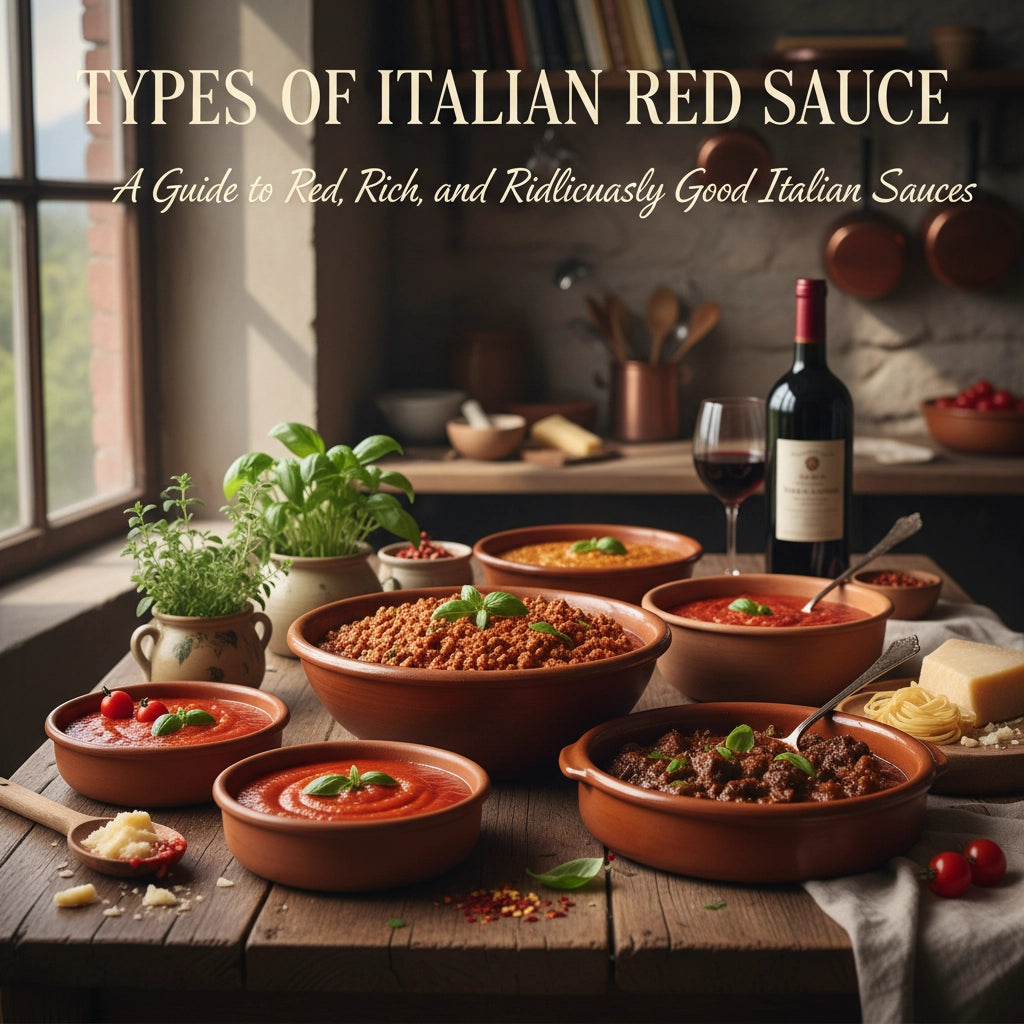
Types of Italian Red Sauce: A Guide to Red, Rich, and Ridiculously Good Italian Sauces
Share
There's something almost magical about the first time you truly taste an authentic Italian red sauce. Not the jarred stuff from the grocery store, but a sauce that's been simmered with care, where each ingredient tells its own story. The aroma hits you first: that perfect marriage of tomatoes, garlic, and herbs that seems to transport you straight to a sun-drenched Italian kitchen.
At Apastioli, we've spent years perfecting our approach to these timeless sauces, understanding that each variety carries with it generations of tradition, regional pride, and an almost sacred respect for simplicity done right. Let's take a journey through the most beloved Italian red sauces, exploring not just their ingredients, but the stories and craftsmanship behind each one.
Marinara: The Foundation of Italian Cooking
Marinara is where every great Italian sauce story begins. Picture this: sailors (marinai) setting out from Naples with nothing but the essentials: olive oil, garlic, tomatoes, and herbs. These ingredients wouldn't spoil during long voyages, and more importantly, they could be transformed into something extraordinary in the time it took pasta to cook.
The beauty of marinara lies in its restraint. When you're working with just four or five ingredients, each one has to be perfect. The tomatoes need that bright acidity, the garlic should be fragrant but not overpowering, and the herbs: usually basil or oregano: should sing without shouting. Our Tomato Fresh Basil Marinara captures this philosophy, celebrating the purity of San Marzano tomatoes with just enough fresh basil to make your kitchen smell like a Italian grandmother's been cooking all day.
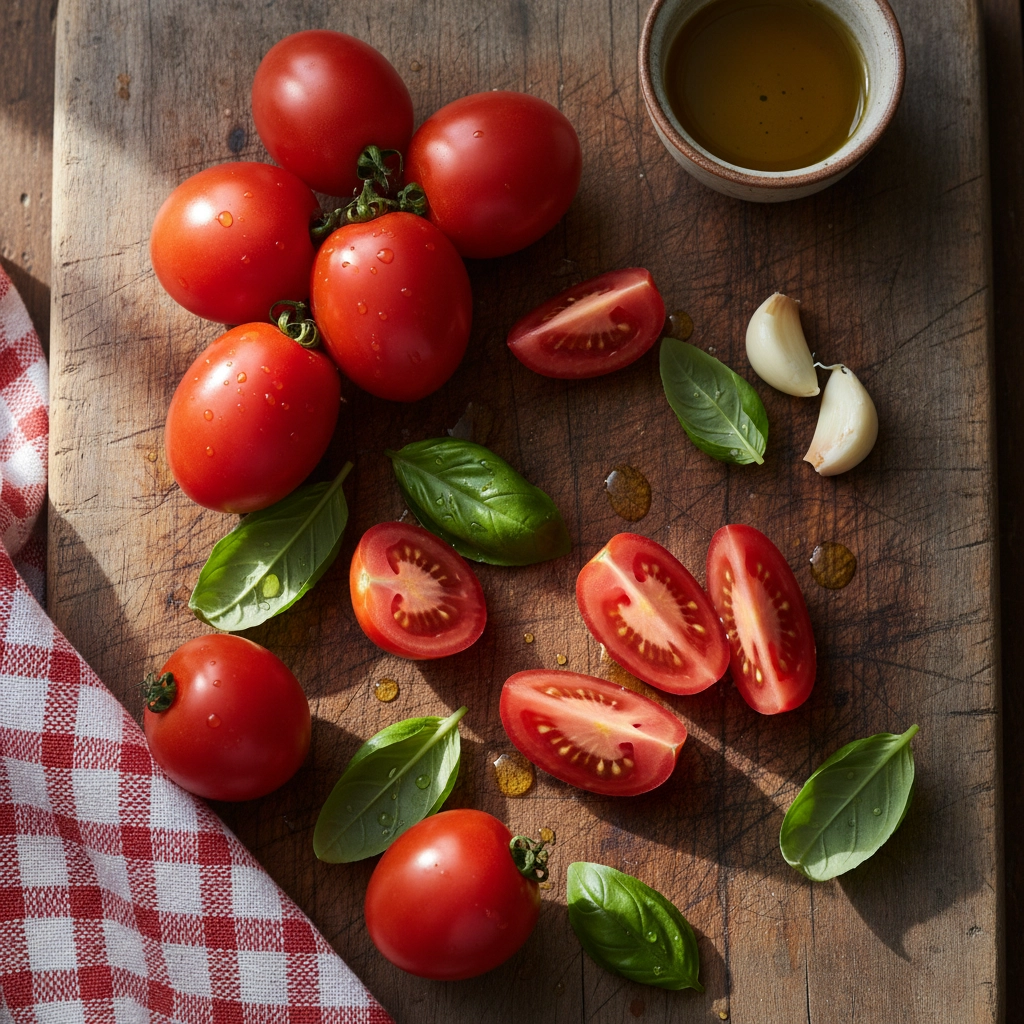
What makes marinara so special isn't just its simplicity: it's its versatility. This sauce becomes the foundation for countless other preparations. Add red pepper flakes, and you've got arrabbiata. Toss in some anchovies, capers, and olives, and puttanesca emerges. It's like having the perfect canvas for culinary creativity.
Arrabbiata: When Marinara Gets Angry
"Arrabbiata" literally translates to "angry," and one taste explains why. This is marinara's fiery cousin, where red pepper flakes transform a gentle sauce into something with real personality. The heat isn't just about spice: it's about waking up your taste buds, creating a sauce that demands attention.
The art of making great arrabbiata lies in balancing that heat with the sweetness of quality tomatoes. Too much pepper, and you lose the tomato's voice. Too little, and it's just marinara with an identity crisis. When done right, arrabbiata creates this beautiful tension between sweet and spicy that keeps you coming back for more.
The Regal Complexity of Ragu alla Bolognese
If marinara is the humble foundation, Ragu alla Bolognese is Italian cuisine's crown jewel. This isn't just a sauce: it's a meditation on patience and respect for ingredients. True Bolognese takes hours, sometimes an entire afternoon, of gentle simmering that transforms humble ingredients into something transcendent.
The ritual begins with a soffritto: that holy trinity of diced onions, carrots, and celery, slowly cooked until fragrant. Then comes the meat, usually a combination of beef and pork, cooked until it releases its richness into the pan. A splash of wine, a careful addition of tomatoes, and then the real magic happens: time.
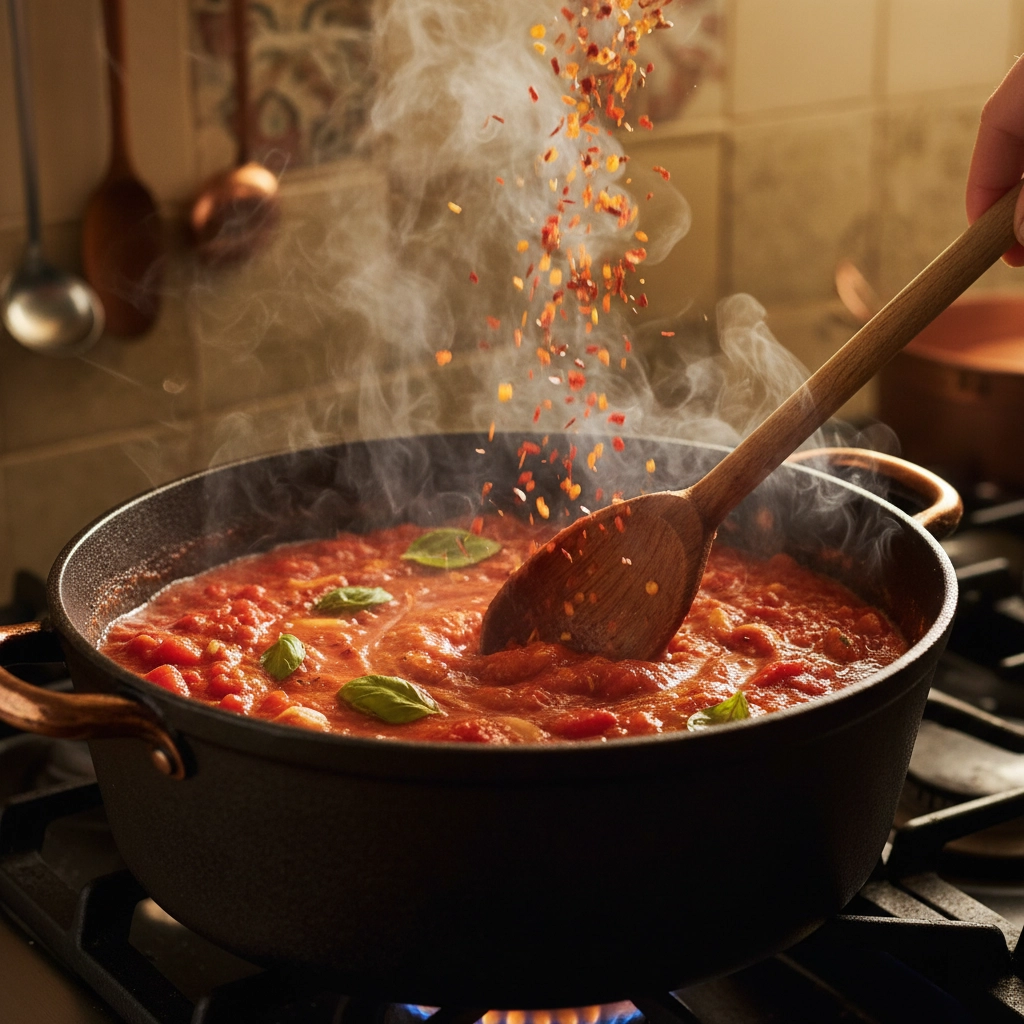
As the sauce simmers, something beautiful occurs. The meat breaks down, the vegetables meld together, and the tomatoes lose their sharpness, becoming something deeper and more complex. The final touch: a splash of milk or cream: might seem unusual, but it's what gives authentic Bolognese its signature silky texture and helps balance the acidity.
Puttanesca: The Sauce with Stories
No discussion of Italian red sauces would be complete without puttanesca, the sauce that comes with the most colorful backstory in all of Italian cuisine. Whether you believe it was created by working women who needed something quick to make between clients, or by resourceful cooks making magic from pantry scraps, puttanesca represents the beautiful chaos of improvised cooking.
This sauce is pure umami: anchovies, capers, olives, garlic, and tomatoes creating a flavor profile that's simultaneously briny, spicy, and deeply satisfying. It's the kind of sauce that shouldn't work but absolutely does, each bold ingredient somehow harmonizing with the others.
What strikes me most about puttanesca is how it embodies Italian cooking philosophy: taking simple, preserved ingredients and creating something extraordinary. Those anchovies aren't there to taste fishy: they dissolve into the sauce, providing depth and complexity. The capers add bright pops of acidity, while the olives contribute richness and a subtle earthiness.
Amatriciana: Roman Tradition in Every Bite
Amatriciana tells the story of Rome's shepherding culture, where travelers needed portable ingredients that could create satisfying meals anywhere. This sauce carries with it the weight of tradition: so much so that the town of Amatrice actually passed official regulations about what constitutes authentic amatriciana.
The stars here are guanciale (cured pork jowl) and Pecorino Romano cheese. The guanciale renders its fat slowly, creating a base that's both rich and slightly smoky. When combined with quality tomatoes and a touch of black pepper, you get a sauce that's deceptively simple but incredibly satisfying.
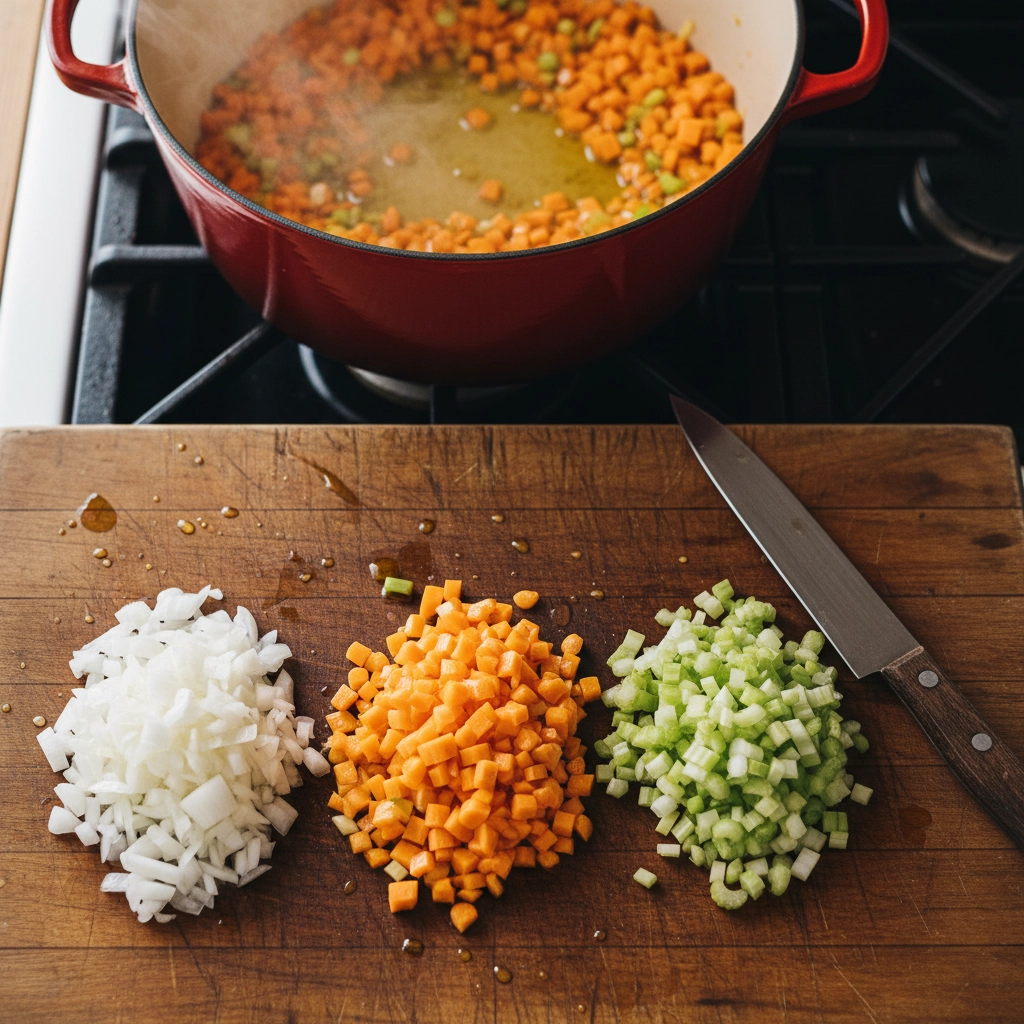
What fascinates me about amatriciana is how passionate people get about its authenticity. When a famous chef admitted to using garlic in his version, it caused genuine controversy. This isn't just about food: it's about cultural identity, about respecting the generations of cooks who perfected these recipes.
Our Approach at Apastioli
Creating exceptional Italian red sauces isn't just about following recipes: it's about understanding the soul of each sauce and respecting the ingredients that make them special. Our Classic Italian Red Sauce represents years of perfecting this balance, combining traditional techniques with the kind of quality ingredients that make the difference between good and extraordinary.
We start with San Marzano tomatoes, not because they're trendy, but because their sweetness and low acidity create the perfect foundation. Our garlic is slowly warmed in olive oil: never burned, never rushed: allowing its essence to infuse the oil without overwhelming the delicate tomato flavors. Each herb is added at exactly the right moment to preserve its character.
The real secret, though, isn't in any single ingredient: it's in the patience and attention that goes into every batch. Good sauce can't be hurried. It needs time to develop, for flavors to marry and deepen, for that magical transformation that turns simple ingredients into something that makes you close your eyes and smile.
The Art of Sauce Timing
One thing that separates exceptional Italian red sauces from ordinary ones is understanding timing. Garlic should be warmed gently with the oil from the beginning: starting them together prevents burning and allows for a deeper, more complex flavor. Tomatoes need enough heat to concentrate but not so much that they become bitter. Fresh herbs lose their potency quickly under high heat, while dried herbs need time to rehydrate and release their oils.
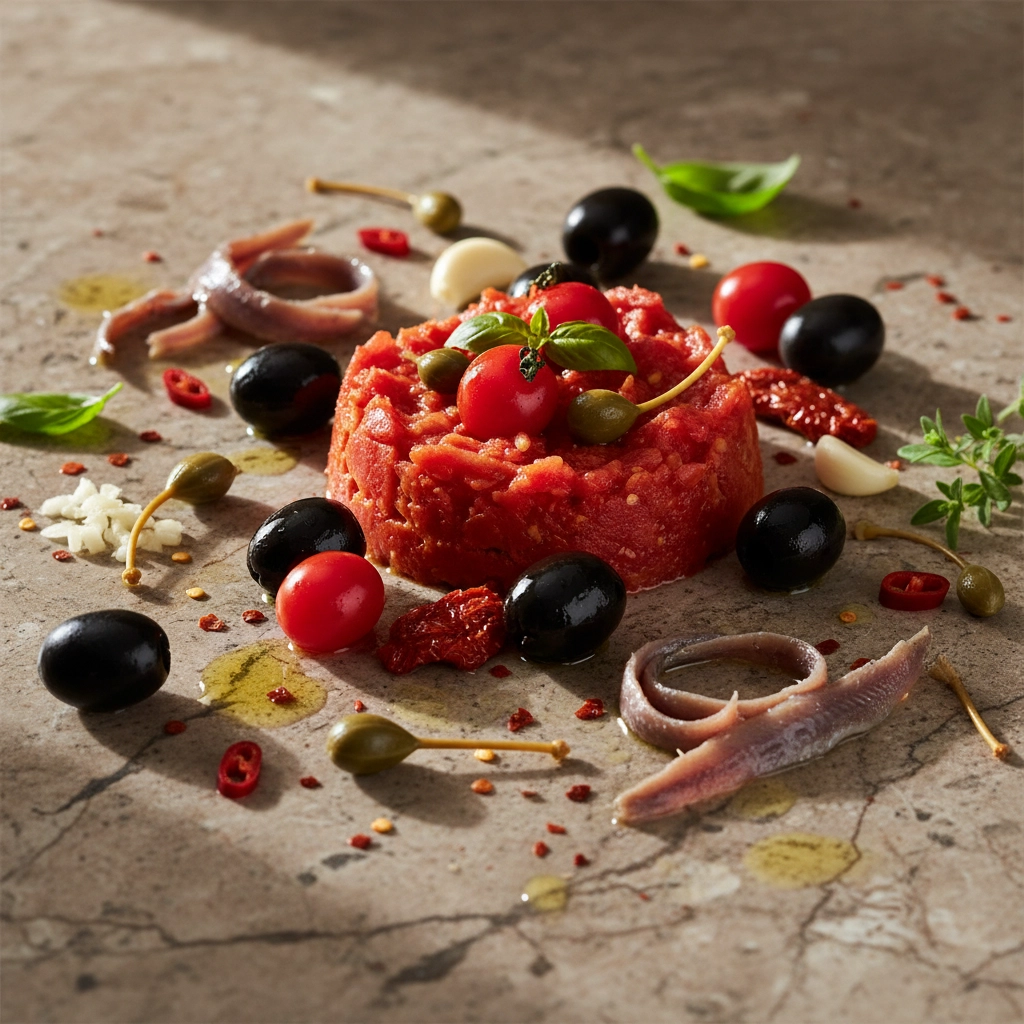
Even the pasta water plays a crucial role. That starchy, salty liquid becomes part of the sauce, helping everything cling together and creating the perfect consistency. It's these small details, passed down through generations of Italian cooks, that elevate a simple sauce into something memorable.
Beyond the Basics
While we've covered the classics, the world of Italian red sauces extends far beyond these foundational varieties. There's fra diavolo with its devilish heat and seafood focus, perfect for those who want their sauce with serious attitude. Regional variations across Italy add their own twists: some incorporating local wines, others featuring unique herb combinations that reflect their terroir.
What unites all great Italian red sauces is their respect for ingredients and their understanding that simplicity, done with care and attention, creates something far more satisfying than complexity for its own sake. Each sauce tells a story: of place, of tradition, of the hands that stirred the pot and the families that gathered around the table.
In our kitchen at Apastioli, we honor these traditions while creating sauces that bring that same sense of warmth and satisfaction to your table. Whether you're reaching for our Garlic Onion Marinara for a quick weeknight dinner or our Pizza Sauce for a weekend gathering, you're not just getting a condiment: you're getting a connection to centuries of culinary wisdom.
The next time you open a jar of quality Italian red sauce, take a moment to appreciate the artistry behind it. Smell the herbs, notice how the flavors develop as the sauce warms, and remember that you're experiencing something that connects you to countless Italian kitchens across time and geography. That's the real magic of authentic Italian red sauce; it's not just about feeding the body, but nourishing the soul.
